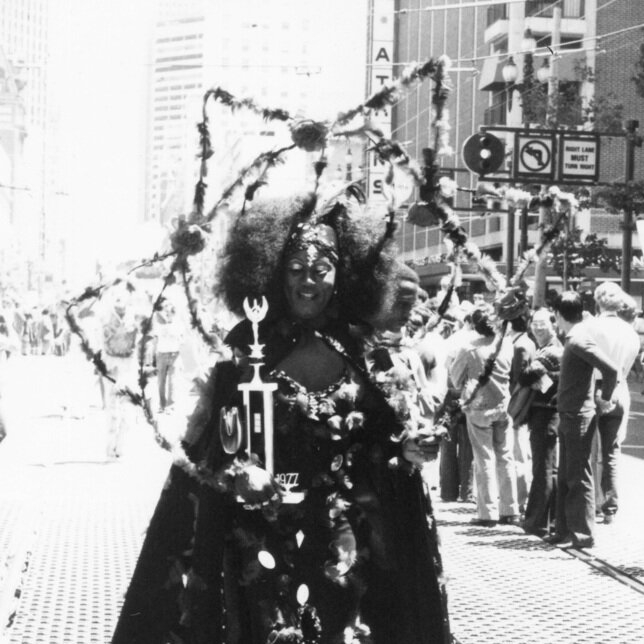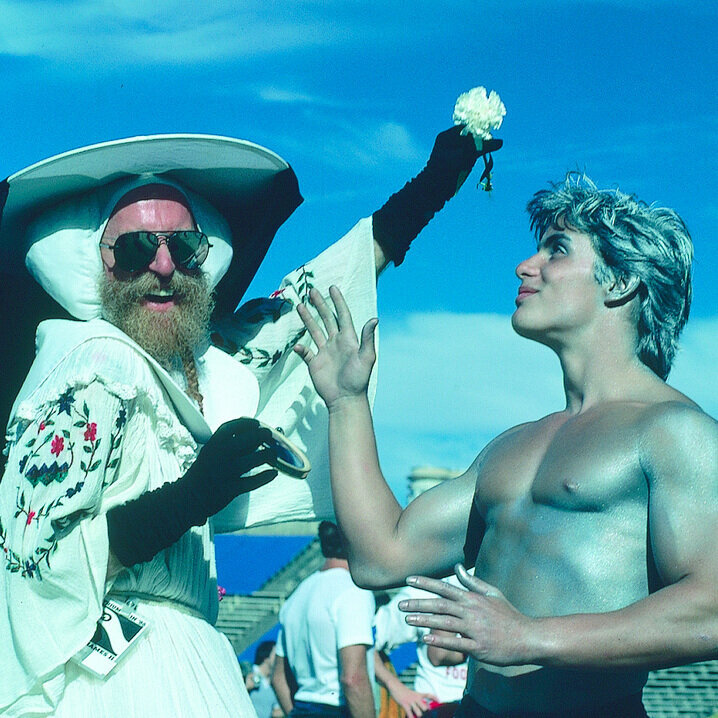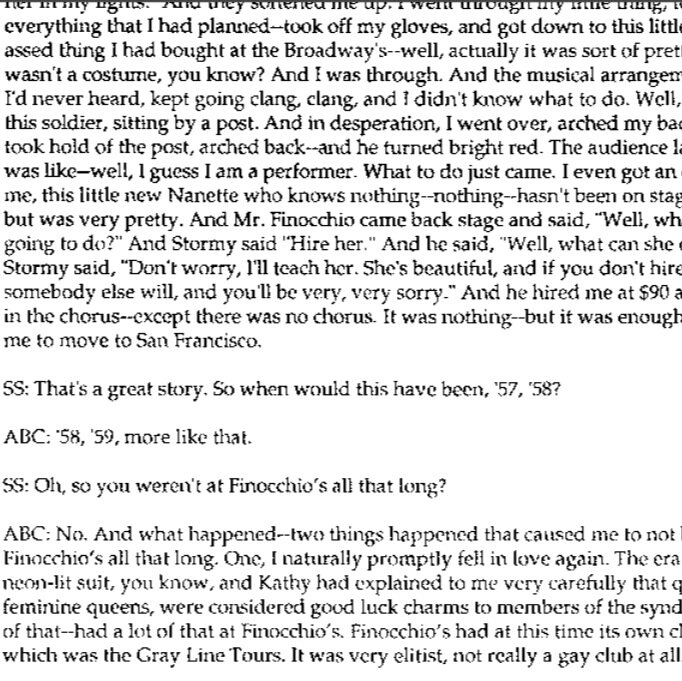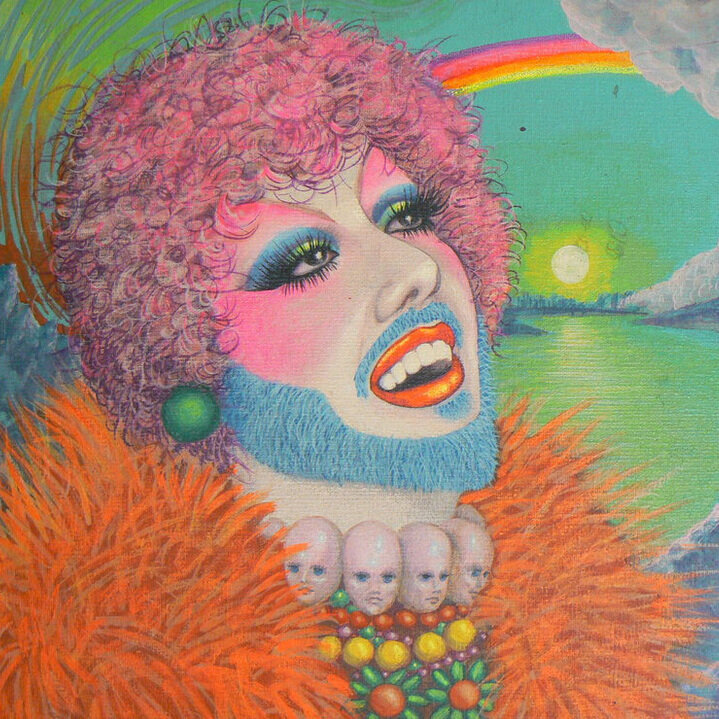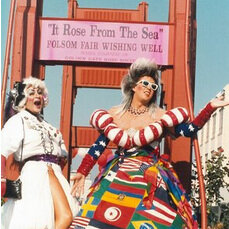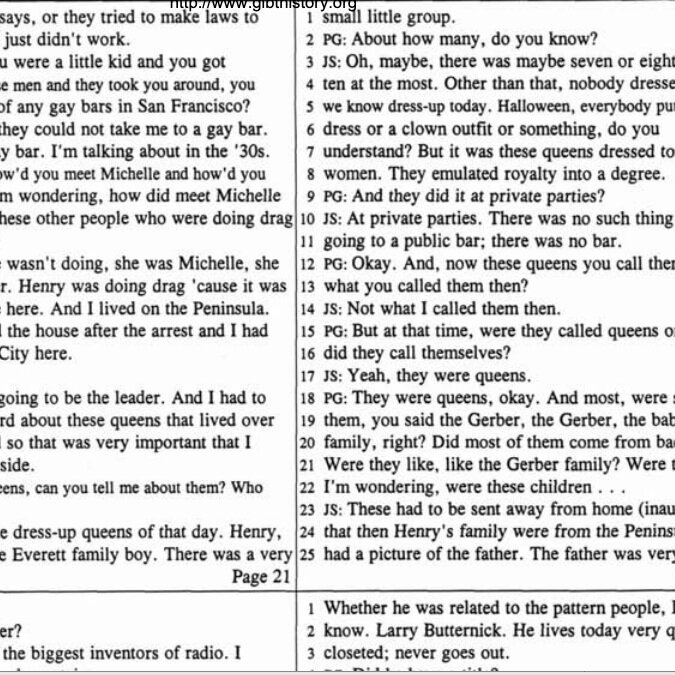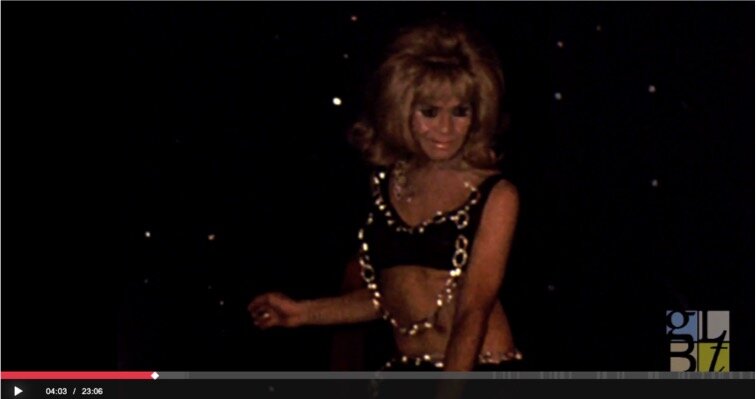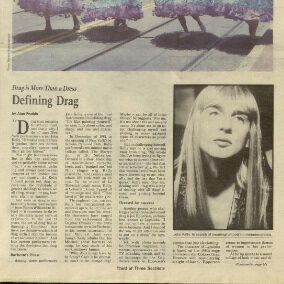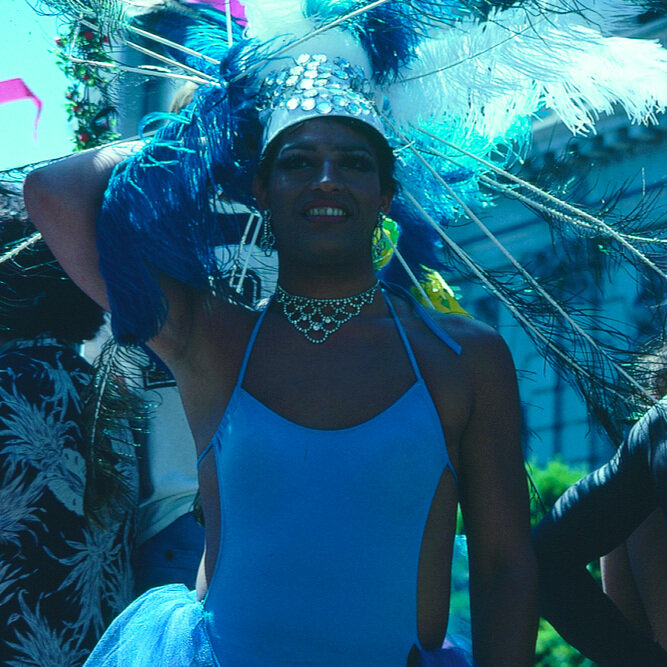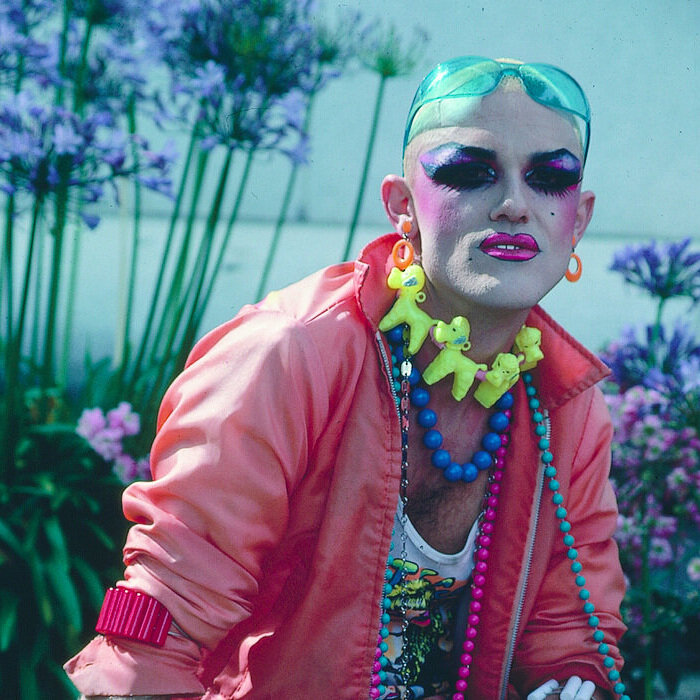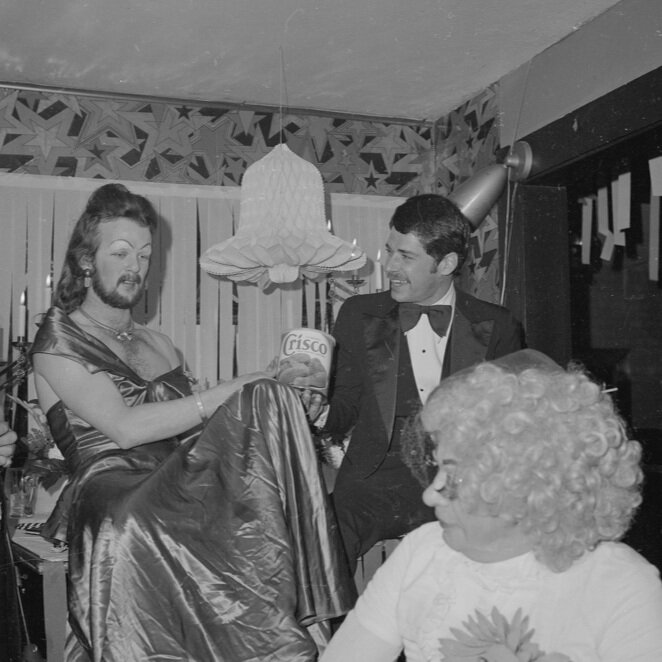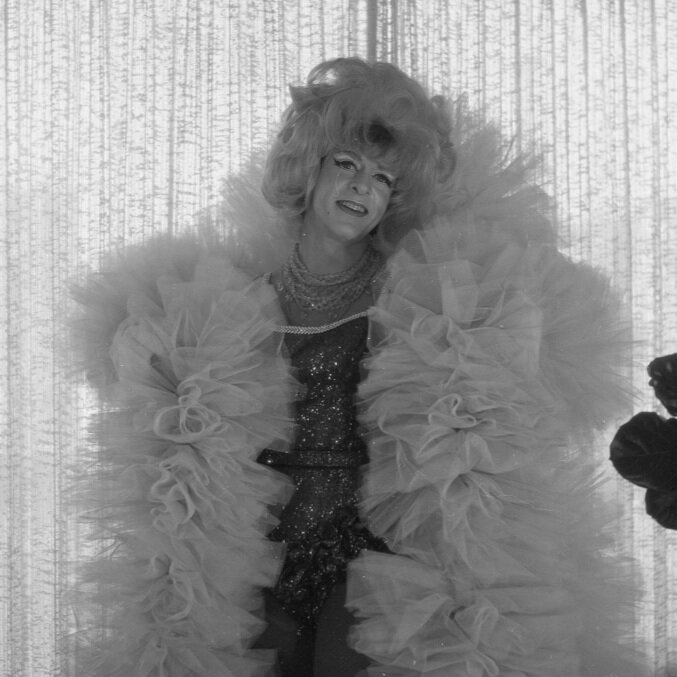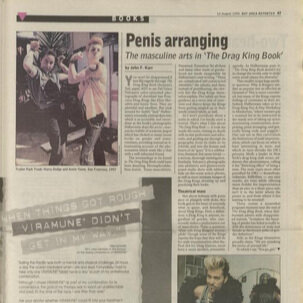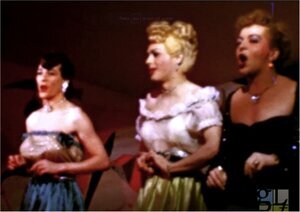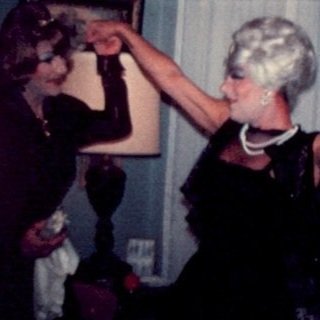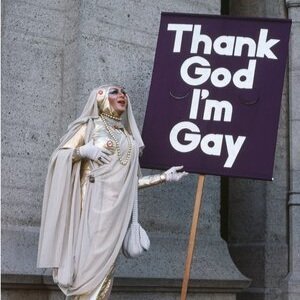Primary source set: Drag
Drag artistry has been central to queer self-expression in San Francisco. It is a vital part of LGBTQ+ parades, performances, and the pageantry of the Imperial Court System. For many people, drag is art, career, medium of protest, or all of the above. In the 1950s and 1960s, queer patrons congregated at the Black Cat bar to see José Sarria’s opera parodies and his exhortions to live proudly and openly, and tourists visited Finocchio’s to see polished, professional female impersonators. In the 1980s, the Sisters of Perpetual Indulgence began their order of drag nuns, with their mission of education and charity work. Throughout these time periods, drag has also been a way for gender-nonconforming people to explore their identity; some people who have worked as drag performers also identify as genderqueer or transgender.
Portrait of San Francisco drag icon Juanita MORE!, from GLBT Historical Society Art & Artifact Collection.
Selected Source Set
Additional Resources
1960s videos of drag performances.
Bay Area Reporter articles mentioning drag.
GLBT Historical Society exhibit Reigning Queens.
Videos of Pride parades from the 1970s and 1980s, including many drag performers.
The Digital Transgender Archive contains many periodicals, such as Drag magazine, that explore the places where drag and trans identities overlap.
Search for drag kings at the Digital Transgender Archive.
Search for drag queens at the Digital Transgender Archive.
Contact reference@glbthistory.org for research questions or information about reproductions and permissions.
These primary source sets are just a small sampling of our digitized materials. Additional resources are available in our digital collections. Our extensive archival holdings are searchable through our catalog.

